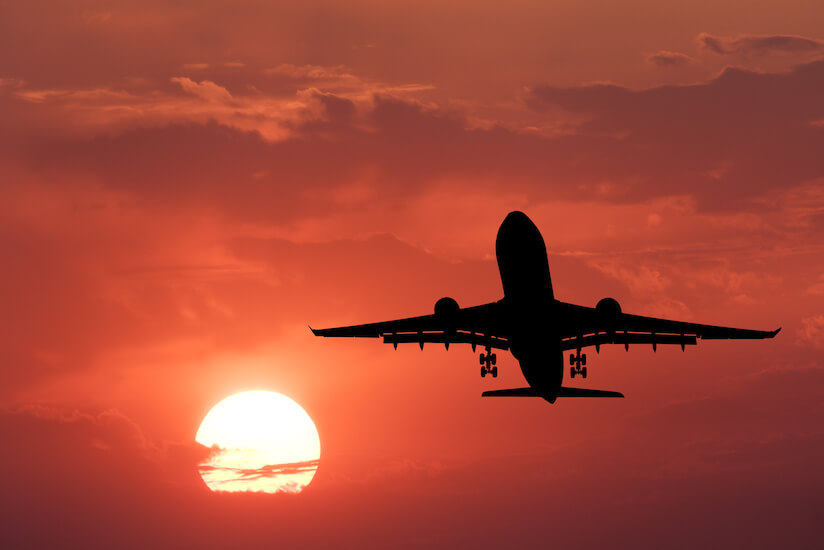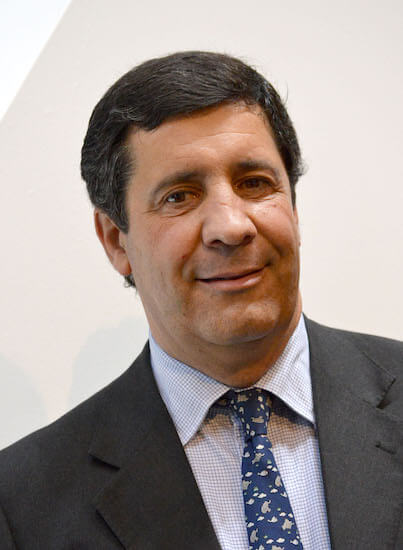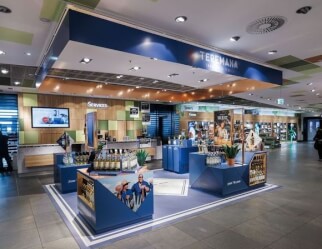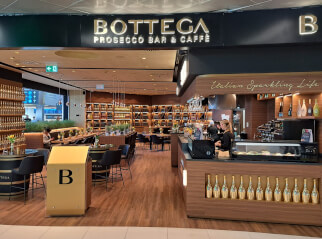Cautious optimism among industry leaders
This is a special feature from Global Travel Retail Magazine's 2023 Summit of the Americas issue, on page 6.

Three years ago the World Health Organization declared COVID-19 a pandemic. Now, international air passenger traffic is on the rise and some regions are showing signs of serious recovery.
This report brings together Michael Payne, President and CEO of International Association of Airport Duty Free Shops (IAADFS), Erik Juul-Mortensen, CEO of Tax Free World Association (TFWA) and José Luis Donagaray, General Secretary of Asociación Sudamericana de Tiendas Libres (ASUTIL), for an update on recovery of the duty free and travel retail industry in the Americas. They also examine the factors affecting spend and the challenges ahead.
Global tourism increase
According to data from the United Nations World Tourism Organization (UNWTO), more than 900 million tourists traveled internationally in 2022 – double the number recorded in 2021, though still only 63% of pre-pandemic levels. The Organization reported every global region recorded notable increases in international tourist numbers.

Michael Payne, President and CEO, IAADFS
The Middle East experienced the strongest relative increase as arrivals climbed to 83% of pre-pandemic numbers.
Europe reached nearly 80% of pre-pandemic levels as it welcomed 585 million arrivals in 2022. Africa and the Americas both recovered about 65% of their pre-pandemic visitors, while Asia and the Pacific reached only 23%, due to stronger pandemic-related restrictions which have started to be removed in recent months.
While these numbers make pleasant reading, there remains a long way to go before the world completely recovers from the pandemic.
Given the restrictions that were in place through the pandemic, the Association representatives agree that the pent-up demand driving recovery is no surprise. The desire to travel is strong – and travelers are willing to spend money, but the question is how long will this last?
Donagaray tells Global Travel Retail Magazine (GTRM), “We’re facing a complicated mix of issues: there is a lack of frequency, excessive demand and inflation.”
Swelling interest rates, a slim job market and looming recession are among the other issues threatening a robust recovery across the duty free and travel retail industry in Latin America.
Donagaray says domestic travel within Mexico, Brazil and Argentina remains strong, but international travel is lagging.
Airlines in the region saw a 119% rise in international traffic and 93.3% increase in annual capacity in 2022 compared to full year 2021; load factor increased 9.7 percentage points to 80.8%, according to data from the International Air Transport Association.
ASUTIL predicts the region will move closer to 2019 levels by the end of 2024, Donagaray adds.
The lagging Asia Pacific market is a huge factor in global recovery, Juul-Mortensen acknowledges. But the recent changes to restrictions for Chinese travelers brings promise for “significant recovery,” he says, citing news from the Beijing-based Civil Aviation Administration of China (the Chinese civil aviation authority under the Ministry of Transport). The company reports that an astounding 9 million passengers were transported via air travel during the 2023 Chinese New Year period (January 21 to 27, 2023).
For Europe, the war in Ukraine is dampening some sentiments toward travel to Europe, but south European destinations are performing particularly well, Juul-Mortensen adds.
Demand is obviously present, but what consumers must spend on flight tickets, food and accommodations will impact how much they spend on travel retail purchases as more people begin traveling again.
Revenge travel
Meanwhile, Juul-Mortensen cites revenge travel as a possible reason for increased travel demand, but most likely in regions such as Asia where there were severe restrictions due to the pandemic.
According to UNTWO, tourists are expected to “increasingly seek value for money and travel closer to home in response to the challenging economic climate.”
Based on the Organization’s forward-looking scenarios for 2023, international tourist arrivals could reach 80% to 95% of pre-pandemic levels.
Juul-Mortensen agrees and is optimistic long-haul travel will recover in the next year or two.
Payne suggests that the demand for travel is unpredictable.
“Weather, regional struggles, virus and other health issues, staffing and capacity limits on airlines and in airports, can be factors and most are unpredictable,” he remarks to GTRM. “Revenge travel to me is just another new buzzword for pent-up travel demand and at some point, it will stabilize.”
Eighteen million Chinese tourists are expected to travel internationally in the first half of 2023, followed by 40 million in the second half of the year, according to China Outbound Tourism Research Institute.
Payne says, “It could take a long time for this demographic to shift to predictable trends by nature.
“This is due to the sheer volume of travelers and the amount of time they were restricted. Spend-per-passenger could drop somewhat, but the volume of travelers could off-set that trend,” he says, adding that this year’s summer and holiday seasons will reveal more.
“We are cautious about what the immediate future holds. If costs remain high, we can’t expect the growth curve to continue a particularly dramatic upward trajectory. That being said, there is undoubtedly room for growth,” agrees Juul-Mortensen.
Optimum shopper offer
Juul-Mortensen is adamant that shopping remains a huge part of the travel experience. “Statistics show it is among the top-five motivations driving people to travel. It is up to us to ensure our offer is the best possible.”
A seamless experience is an opportunity to encourage travelers to spend, according to Payne. He says supporting funding resources to enhance airport infrastructure development, such as upgraded security screening, can speed travelers through security and customs faster, increasing dwell time and curating a more relaxed environment to shop. This would also require expanding the personnel at these airport checkpoints.
Juul-Mortensen also points out that the number of short transfers internationally decreased from 44% in 2019 to 37% in 2023 and highlights the “major opportunity” for duty free and travel retailers to benefit from the longer dwell times.
To help maintain spend through the pandemic, Donagaray says the region continued investing in the channel with the opening of new stores and terminals in Argentina, Uruguay, Brazil and Panama.
Duty free stores are available in Arrivals and Departures at every airport in Latin America, offering a wide selection that attracts tourists from across the region.

Erik Juul-Mortensen, President, TFWA
A focus for ASUTIL during the pandemic was negotiating to increase duty free allowances within Latin America. The mission was successful, with Uruguay increasing allowances for air travelers entering the country from US$650 to US$1,000. Post-pandemic it remains at US$850.
In Brazil the allowance for travelers entering by air is now US$1,000 at airport stores and US$500 at land border stores.
ASUTIL also negotiated to allow for delivery of duty free purchases to increase spending. Although most international flights arrive to the Brazilian hub of São Paulo, passengers arriving from international flights and transiting to domestic flights can purchase at duty free shops and receive delivery within 15 days.
Donagaray says this has been extremely helpful, particularly when it comes to driving spend in the electronics category.
The importance of value
In addition to emphasizing the importance of increasing dwell time to encourage spend, Juul-Mortensen points to research from Swiss company m1nd-set’s on evolving shopper behaviors.
“We need to consider how we offer good value from an experience and price point perspective,” he says, referencing month/date data from m1nd-set which reveals that price and value remain key barriers to purchase in travel retail.
“Higher price points and the lack of motivating promotions were among the main reasons stopping travelers from shopping in duty free and travel retail stores when traveling internationally. Our stores need to take this into consideration,” he says.
UNTWO research states that tourists are expected to “increasingly seek value for money and travel closer to home as a response to the challenging economic climate.”
According to research from Airport Dimensions who are global specialists in designing, building, and operating shared-use airport lounges, there are various traveler categories.
These include ‘Premiers’, who spend around 15% of their time shopping, ‘Affluents’, who account for 18% of total travelers and take a balanced approach to what they spend and ‘Explorers’ who seek a low-budget experience.
Aside from traveler categories, Payne pinpoints the smoothness of the airport process as a major factor in determining whether passengers shop. “Do they have time to relax and shop or are they waiting in lines getting angry and running to the gate? What is their mood, regardless of what they intended to do?” he asks.
Payne also highlights the importance of industry-wide collaboration and sharing best practices among retailers and airport partners. This is another way of enhancing the passenger experience – a theme which will be covered at Summit of the Americas, he points out.
“Any single Association [cannot] solve the problem, but working together and coordinating is becoming more and more effective, making a positive contribution,” Payne says.
The rise of “bleisure” travel
The distinction between business and leisure travel has become less clear in recent years. Bleisure travel – the combination of both – is on the rise, according to spring 2022 research from Travel Edge Network that reveals a 25% increase in demand for “workcations” compared to recent years (Bleisure Travel Rapidly Increasing At Hotels And Resorts, Forbes).
Payne says this leisure add-on could be impactful in increasing travel retail spend – an air ticket paid by the company could translate to more spend in travel retail stores. But, Payne says, there are still many variables to consider in this scenario that could affect spend, such as whether they are traveling alone or accompanied by colleagues, friends or family members.
“Business travel has not declined to the degree we thought it might. It continues to recover despite a looming economic recession,” Juul-Mortensen says.

José Luis-Donagaray, General Secretary, ASUTIL
Referencing the TFWA Travel Outlook H1 2023 webinar, Juul-Mortensen says trade events, such as TFWA conferences and exhibitions, continue to attract strong numbers of delegates, perhaps as a welcome alternative to Zoom and Teams meetings.
Meanwhile, leisure travel is still popular, particularly in Latin America which has a stronger leisure recovery than business, Donagaray remarks.
“An example of the rise of global tourism is even with Argentina’s exchange rate issue, this summer in Uruguay, we had more Argentine tourists than in the last twenty years. Tourism is moving. It’s moving a lot,” he explains.
Further information including airline data, border acitivty and consumer trends will be presented by Jose Ricardo Botelho CEO at Latin American & Caribbean Airport Transit Association (ALTA) at the ASUTIL Conference in Buenos Aires, Argentina in June.
Furthermore, Juul-Mortensen highlights that the premium segment in South American outbound markets has increased by nearly 10% compared to 2019. This suggests premiumization in leisure travel could indicate that many travelers are looking to upgrade their experience due to a pent-up desire for adventure.
FDFA’s Barbara Barrett highlights recovery in Canada

Barbara Barrett, Executive Director, Frontier Duty Free Association
After two tumultuous years, Frontier Duty Free Association (FDFA) is looking forward to the duty free industry being “firmly on the road to recovery,” FDFA Executive Director Barbara Barrett tells GTRM.
The Association was at the forefront of getting Canada’s land border reopened and removing sticking points serving as barriers to travel and its businesses.
During the lengthy border closure and continued travel restrictions, Barrett says it was imperative that FDFA became the national voice of the industry. The aim was to ensure duty free and its supply chain was included in government support measures such as rent and wage subsidies.
“FDFA formed alliances with larger tourism associations to bring to bear one of the loudest, most effective advocacy efforts that lead to Bill C-2 passing. This specifically named land border duty free one of only 20 qualifying industry groups,” she explains.
FDFA’s work with the Coalition of the Hardest Hit Businesses was recognized as the best advocacy campaign of the year for 2021 by the Canadian Society of Association Executives.
The Association also formed a coalition of border community mayors and political leaders on both sides of the border. In addition, it launched a successful campaign to remove measures so border communities – and border community businesses – could get back to business.
“As Canadians and Americans habituate to traveling with ease across the land border, we expect our stores to return to pre-pandemic business. We are looking forward to the summer, which is typically our peak season, and to growing and thriving again,” Barrett adds.










